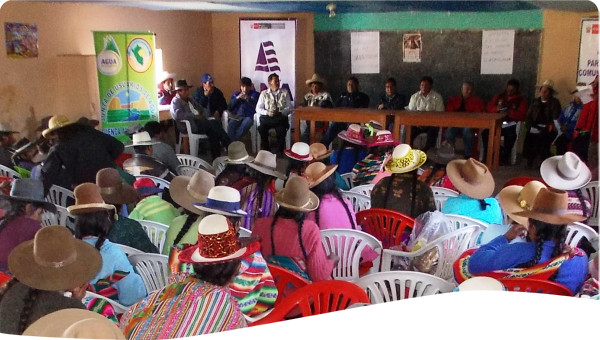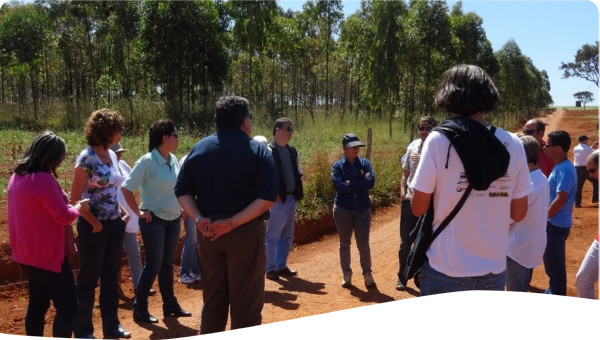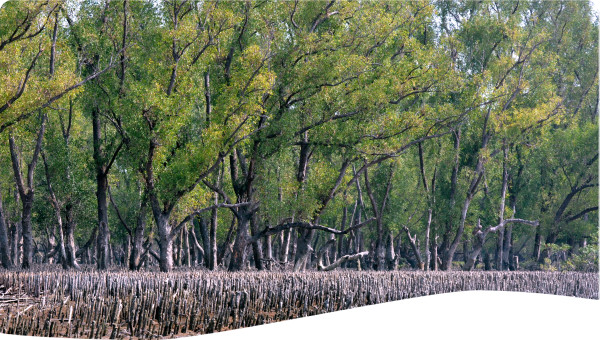Small and medium size communities in Central Europe are faced with severe problems of wastewater management. When it comes to wastewater management, small settlements lie outside of the concern of water managers and decision makers. A group of citizens initiated a cooperation process with civic associations, members of local authorities and later the cooperation included local small entrepreneurs as well as foreign investors to actualize several local projects and initiatives.
Lack of investments in wastewater management is the main factor that hampers the development of these settlements. Hostetin village, on the foot of the White Carpathian Mountains is an example of such settlements in Czech Republic. Rising unemployment in the area prompted residents to seek work elsewhere; the migration from the area has led to a significant loss in population density. Uncontrolled water pollution to the environment was even more complicated by the fact that the locality is in the vicinity of the water reservoir serving inhabitants with drinking water supply. The only solution for the village to grow was to establish a water supply system, safe sewer system, and wastewater treatment plant.
Natural (extensive) methods treat wastewater from individual settlements and small communities aby imitating the natural self-cleaning processes that may take place in the soil, water or wetland environments. The NWWT methods are mostly used for individual homes and recreational facilities, to municipalities of 2,000 population equivalent (p.e.), small industrial plants, and farms (exceptionally effective for larger systems).
This case study focuses to analyse and assess wastewater treatment produced in a small village. It assesses complex issues ranging from legal, administrative, economic, and social aspects; these aspects are frequently abandoned when designing alternative approaches to water quality problems. Important aspects of the capacity to involve the local community and other stakeholders, choosing suitable and sustainable solutions are discussed.
In 1990, after the fall of the communist regime and the first social changes in Czechoslovakia, the municipality decided to solve the sewerage in the village by removal of existing infrastructure to incorporate a sewage treatment plant. At that time authorities did not recommend seeking alternative (and cheaper) solutions, such as constructed wetland (CW) treatment, due to lack of experience with these types of WWTP in the Czech Republic in the 1990’s.
It started with a small number of citizens who initiated a cooperation process with civic associations, members of local authorities and later the cooperation included local small entrepreneurs as well as foreign investors to actualize a number of local projects and initiatives.
The local authority decided in collaboration with members of NGO Veronica in Brno to organize a seminar that would help illuminate the situation of the water quality in the whole catchment of the Bojkovice water reservoir. The seminar was specifically designed to incorporate mayors, civil officers, workers whose activities affect water management, but also invited other interested parties, e.g. members of civic associations, including fishing associations. The seminar proved that alternative solution (CW treatment method) should be seriously considered. The construction of the plant started in July 1095 by a local construction company and started its operation in 1997.
In the next two decades, this catchment, and in particular projects implemented in Hostětín and surroundings, became the basis for education and training of environmental protection, sustainable development, presentation and environmentally friendly technologies, sustainability solutions of small settlement. A leader of these activities was a local NGO Veronica who initiated the established of eco-centres, workers cider, association “Tradice Bílých Karpat” and friendliness of the local community and the municipality.
A similar seminar was organized in the Upper Olšava basin ten years later in 2004, which aimed to create a repeating survey of surface water pollution. The outcome of the seminar was a collection of contributions from experts, basin managers, and administration involved in the survey. In 2004, under the umbrella of the eco-centre in Hostětín, a conference on "Rural Landscape" was organized to host the presentation of work, with significant involvement from university students. In 2006, funding allowed NGO Veronica to further the survey of the state of the surface water pollution, as well as construct a detailed monitoring plan of the WWTP in Hostětín in response to changes in the use of detergents with phosphates.
The driving force to change the unfavourable situation was through introducing the concept of sustainable development in the region. A practical application of the concept was attempted in several layers such as the application of economic self-sufficiency of the region, rebuilding a regional identity of locals, reviving the traditional crafts and technologies, involving more people in community and regional events, promotion of environmentally friendly lifestyles, strengthening social ties, and restoring local communities.
Today, more than 20 years experience shows that a decision to implement the CW method with pre-treatment facilities, and tertiary treatment of water by a waste stabilization pond was a sustainable solution. In the next two decades, this catchment, and in particular projects implemented in Hostětín and surroundings, became the basis for education and training of environmental protection, sustainable development, presentation and environmentally friendly technologies, sustainability solutions of small settlement. Thanks to the local village near the border between the Czech Republic and Slovakia, Hostětín has become a place of cross-border meetings and exchange of experiences with the implementation of projects. A small village like Hostětín has become a pioneer in the sustainable development approach. In the last twenty years, the village has managed to conduct several pilot projects, such as constructed wetland-based wastewater treatment plant, biomass district heating, developing factory for production of cider with organic production, and centre focused on education on sustainable development, which is also an example of ecological construction. Sustainable development components of the WWTP Hostětín project are:
- Economic components:
- the investment costs comparable with other types of wastewater treatment plants;
- the low operating costs;
- the possibility of using the existing sewerage system.
- Social components:
- cancelling of construction prohibition, and community development;
- education and awareness;
- job creation;
- a new type of public space.
- Environmental components:
- sensitive integration of wastewater treatment in the landscape;
- the ability to absorb large variations in water flow;
- treatment ability even when high concentration of pollution;
- treatment ability of the vegetation outside the growing season;
- cost-efficient energy usage.
It seems that it was the power of the initiators that played one of the most important roles in the project. Without them, the Hostětín projects would probably not exist. Similar situations can be observed elsewhere in the Czech Republic.
An emphasis was placed on the importance of education and the strengthening of co-responsibility of citizens, clubs, and associations for deciding on a common environment and use of natural resources.
It is helpful to perform even simple concept study evaluating solutions at the specific time and place. Focus should be on legislative requirements, including the requirements for local development, environmental protection, biodiversity, and quality of life.
A great advantage of the extensive treatment technologies are generally low construction and operating costs, in comparison to the conventional treatment technologies (activated sludge).
Disadvantages are: great demands on surface area, cleaning effectiveness also has a partial dependence on climatic conditions, low technological control of the processes, the need to extract sediment from the biological tanks, constructed wetland filters, and soil filters clogging.
 Case studies
Case studies



